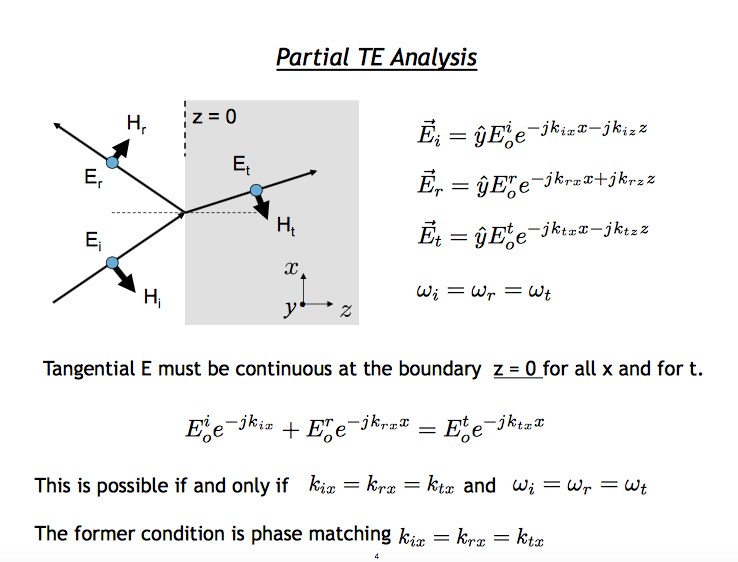I have looked through several Classical ED approaches to introduce evanescent waves, but still can't build the connections.
- I was told that evanescent waves are needed to satisfy boundary conditions on the interface metal-dielectric, see the slide
The argument "if and only if" is not obvious to me. Why is this the only option?
- Trying to find an alternative way to theoretically "generate" evanescent fields, I came across the statement that phase-matching ensures momentum conservation, which made even less sense relying on (1); however, intuitively it must be true, I just can't see it. I think there might be a cross-matching of terminology in Classical ED and Non-linear Optics here though.
How can I strictly prove the necessary presence of evanescent waves, without making this logical jumps?
Additional comment: I found the argument here, p.113, that since continuity should be met in space and time across the boundary, $k_i^{||}=k_r^{||}=k_t^{||}$ should take place. Otherwise, the boundary conditions can be satisfied instantaneously, but not in time. I like the semantics, but I'd rather see the mathematical prof, if it exists.

